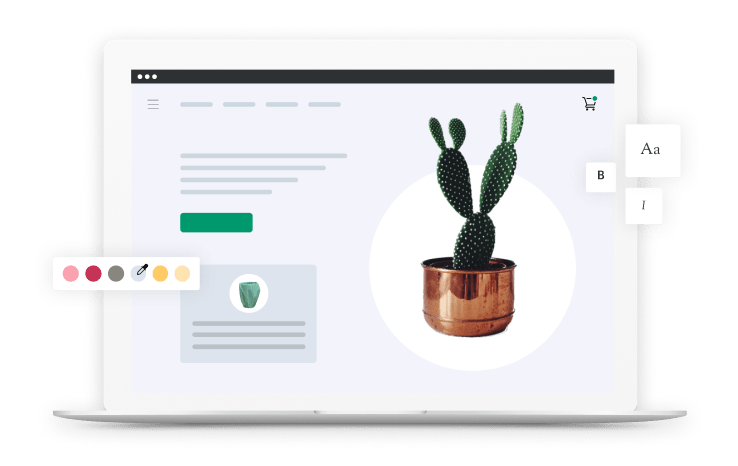0:04
The alcoholic beverage industry is a fast-growing industry, particularly during the COVID-19 pandemic and now is a great time to sell your wine, beer, and spirits online. I’ve worked with a number of beer, wine, liquor stores to launch on Shopify, and I’m here to give you some tips and some learnings I’ve had over the past couple of years about how to best do this.
0:21
So my name is Jonathan Osborn. I’m a partner at Presidio Creative. So we design and develop e-commerce sites for the Shopify Plus platform. We also sell themes on the Shopify theme store. Some of our themes; Broadcast, Modular, Palo Alto. They’ve been downloaded thousands of times by merchants. Been working in industry for about seven years now, and happy to share some of my learnings with you.
0:47
The biggest thing we normally hear from merchants when they’re trying to sell online is just concerns around legal compliance. So if you’re in the United States, or Europe, or UK, Canada, wherever really, the reality is there are some pretty intense laws about selling alcohol. I think this might be a little bit more salient if you’re in the US, but we do tend to see this a lot.
1:05
The biggest thing you can do to offset this is just by setting shipping rules. So in the US, there are some states that you just can’t ship to. So it’s pretty easy to find these online if you do a Google search. But the reality is it’s either not possible or way too difficult to do. I think it’s the same case in other countries, as well.
1:21
But the reality is even if you can legally ship there, you just might not want to. So the good news is in Shopify, you can set your shipping restrictions pretty easily. So that means that you can limit them by country. So let’s say I’m in Alberta and I don’t want to ship to the US, right?
1:37
Totally possible. It’s pretty easy to set that up. Same with like provinces or states. So you can limit that within the admin panel and Shopify. So if you want to go a little bit more granular you need to use an app. You’re in San Francisco, and you don’t want to ship to Oakland. It’s too far, the Bay Bridge is a nightmare.
1:54
So that actually came up with one of the companies I started. So I started Bay Kegs, which is a craft beer delivery service. We were delivering the kegs from Palo Alto all the way to San Francisco sometimes. The reality is the traffic got really bad in San Francisco, and we didn’t want to ship there anymore.
2:10
So we would just do local delivery. Places that were further just didn’t make any economic sense. So if you want to do that the easiest way is usually through a Shopify app. So Shopify does have pretty good options for local pickup. That’s a little bit different than shipping based on ZIP codes, but there’ve been some really cool features that have come out with in-store pickup in particular.
2:29
People typically want to have an over-21 pop-up on their site. Probably if you’re not technical, the easiest way is just using a Shopify expert, someone who is familiar with Shopify. They have good HTML, CSS, jQuery skills. They can be a little bit hard to code, even if you’re pretty familiar with how this stuff works. So it’s not a bad idea to hire someone to do this.
2:47
You can also set this, like maybe it’s outside of the US, and it’s more like an 18 rule instead of 21. But you can change that depending on the app. I know from personal experience, I work with a company called Enhancify and so they’ll do smaller tweaks like this. So if you’re looking for something custom that maybe an app doesn’t fulfill, definitely go down that route.
3:08
所以除了实际的合法合规,there are some just logistical concerns, particularly around taxation. So setting up shipping rules around alcohol compliance can, it can be kind of a manual process. So you kind of need to be abreast of just the changes. So alcohol taxes change relatively frequently, just because it’s a good driver for revenue for states, municipalities.
3:29
There’s kind of two ways to look at this. One is that there’s the automatic tax rules that are set up in Shopify. The other is that you can setup manual overrides. So that’s a really helpful feature. There’s a company called Bloom, too, that also offers integrations with ship compliance. So that’s something we see pretty often come up.
3:45
So ship compliant is a really advanced way to collect taxes, and also do some of the regulatory filings for selling alcohol online. The reality is it’s difficult to find an integration that works really seamlessly with Shopify unless you’re using Bloom. Again, these can be like a little bit more technical to set up, so it’s best to reach out to them directly if you’re looking for a Shopify integration.
4:04
When you do have alcohol shipped to your door, you definitely need to have someone there and you need to have your photo ID present. So it’s good to pretty early in the process set these expectations with the customer. I wouldn’t really do it on your actual store’s site itself, but it’s good to do it, on the notification orders in Shopify.
4:23
So once you place an order, you can even use the standard templates that are on Shopify and add a little bit of code that says, “Hey, make sure that you show up on this estimated date right here, and you bring your photo ID.” That should get it done.
4:41
So another piece that we see is people have pretty specific tastes when it comes to wine, beer, liquor and it can be a little bit hard to find a thing that’s right for you online. So you kind of need to think about how you’re going to design your site to show those properties of what you’re selling. So a couple ways we’ve seen this done.
4:59
One is just using the collection filtering on your Shopify Theme. I think definitely everything has collection filtering. Most of them have sort of like a sidebar collection filtering which is pretty popular. So that can be helpful too if you just have a ton of products and you need people to quickly go through them. So you can set these by tag or by group. Again Shopify has really good documentation, so it’s pretty easy to figure out how to set these up online.
5:21
You don’t need to be a technical wiz to get this going. Your categories can be varietal, it could be vintage, and you could set price rates. Maybe you say “I like Rioja reds, don’t really care about the vintage. I just want under 30 bucks.” You can also do it through a CSV upload if you have lots of products.
5:38
If you’re working with CSV uploads, Excelify is a really good app for that. We use that on a lot of our projects. So outside of the actual collection page setup, another piece that we found is important to think about is your product page. So it’s really good to add some extra detail about the products that you’re selling.
5:56
Just think about where you can add this extra information. On the product description is where people tend to dump a lot of information. If it gets really long, though it just doesn’t look ideal. So you can think about using like product tabs. In the product tabs, you could talk about, maybe, your process for creating the wine. You could talk about what makes your products unique.
6:14
You could, again, talk about things like cost, vintage, varietal. But it’s a really good way to stand out and differentiate them from your competition. Another popular sort of phenomenon, if you will, that we see in the wine sector is wine clubs.
6:30
We’ve had a lot of merchants approach us looking for this setup. They’re actually not too hard to set up in Shopify. The thing that you want to think about is, if you go into Shopify and you’re looking for wine clubs, you’re probably not going to see a lot come up immediately. The reality is that you just need to use an app called ReCharge, which is a recurring payments app to collect a fixed fee on a monthly basis.
6:49
So definitely use ReCharge if you’re thinking about setting up a wine club. Once you have that set up, you can configure the products you are selling. So maybe you’re doing a box of wine every month. And in the app itself, you can actually set the settings, so you know how much wine you’re getting a month and how much you’re paying. It’s sometimes nice to set up unique product templates if you have a wine club.
7:08
So maybe you sell wines that you sell like apiece. So these are a la carte wines, and then you have a wine club. So it can be cool to have a unique template for these. You kind of feel like you’re part of a club. It’s also important to, again, use your email notifications for these. Lots of apps that can do this, but just make it clear that, they know what’s coming in advance.
7:26
So I use Sun Basket and it’s really cool that I can see I’m getting pork chops, you know, in the mail on Tuesday. So it’s nice to see what you have coming ahead, you can look forward to it. You can read a little bit about the wines before you get them. In my opinion wine clubs are a super-cool way to differentiate yourself and get customers acquainted with your products.
7:45
So I hope this was helpful. I ran through some legal compliance, the logistics pieces and then just also some trends in selling alcohol online. So that means looking for sort of collection side filters on your website, adding a little bit of detail on your product pages, and also thinking about potentially doing a wine club on your site.
8:05
If you have any questions, feel free to email me (jonathan@presidiocreative.com). Lots of really, really, good resources on Shopify. Documentation, forums, and also definitely check out Shopify Compass if you’re still looking around for more information. Thanks a bunch. Appreciate your time.





































































































